In this WooCommerce review, I'll outline some of the best tools inside WooCommerce along with some information on how much you'll actually be spending when you install the e-commerce plugin.
Quick Verdict:
WooCommerce is widely regarded as a premier ecommerce solution and stands out as a top-tier plugin for WordPress.
It offers an extensive array of functionalities within a single WordPress plugin and is available at no cost.
In this article:
- Evaluating WooCommerce Against Top Ecommerce Solutions
- WooCommerce Features
- WooCommerce User Reviews
- Ease of Use
- WooCommerce Pricing
- WooCommerce Templates and Designs
- Plugins and Extensions
- Marketing and SEO
- Payment Processing
- WooCommerce Security
- Customer Service
- Hosting Your eCommerce Store
- Who Should Consider WooCommerce as Their Ecommerce Platform?
Evaluating WooCommerce Against Top Ecommerce Solutions
It's rather common to compare WooCommerce to platforms like Shopify or BigCommerce. That's perfectly fine, but it's important to realize the major differences. To start, all of these e-commerce platforms deliver similar results.
WooCommerce varies from these platforms due to one important reason: It integrates with the opensource WordPress content management system.
This means that you'll have more control over your website, but it also requires a little more knowledge about hosting, domain names, and website design. Whereas Shopify or BigCommerce offer complete ecommerce packages, with hosting, tools, processing, and design all wrapped into a neat plan.
That being said, these “packaged” platforms may have limitations within the theme and feature departments. This is a major reason why WooCommerce has become so popular with more advanced developers.
So, now that we've covered the main differences, keep reading our extensive WooCommerce review to understand its features and see if it's right for you.
WooCommerce Features
Some standout features we appreciate in WooCommerce include:
- A beautiful content management system (since WooCommerce runs on WordPress).
- A system that allows you to customize your design with a visual builder or through the code.
- Over 400 extensions and thousands of other WordPress plugins for advancing the look and functionality of your store. For instance, you might want to make a membership site or add a simple contact form. It's all possible with plugins and extensions.
- Access to the REST API for managing and integrating with everything from products to orders.
- Countless themes to make your online store look exactly the way you want. Some of these themes are free, while some of them are sold through third-party vendors.
- Beautiful products and checkout pages. These are complemented by landing pages and a wide variety of other customizable options you would expect from a full e-commerce platform.
- Product ratings and reviews to boost your SEO and make the shopping experience more informative for your customers.
- Unlimited products, images, and galleries. Pretty much everything is unlimited in WooCommerce, so you won't have to worry about any limitations.
- Advanced product sorting and filtering: this makes your search engine rankings better and also guides your customers through lots of products.
- Support for physical, digital, and affiliate products. Unlimited variations are available, and you can import and export large product lists.
- Customizable checkout areas with guest checkout, automated emails, tax options, free shipping, built in payment processing, and more.
It's tough to cover all of the WooCommerce features in one blog post, but I'll certainly try. To explain briefly, WooCommerce works as a WordPress plugin, where you install the plugin to turn your WordPress website into a fully functional online store.
After that, it walks you through a store configuration page where you'll fill in the following:
- Store contact information
- Payment details
- Shipping information
- Extras like automated taxes
- Bulk product uploads
Upon completion, two tabs show up on the left-hand side of your WordPress dashboard–one for products and the other for your primary WooCommerce settings. It's all consolidated there, making it easy to add to your store and manage what goes on in the future.
As you can see, the feature list is pretty long. And that's only scratching the surface.
The fact of the matter is this: If WooCommerce doesn't have the feature you need it's most likely not going to be included in any other e-commerce platform. And if you're hard-pressed to find something unique, like a subscription engine, you can use extensions and plugins to satisfy your needs.
WooCommerce User Reviews
To gain an understanding of how WooCommerce has helped individuals build and expand their online businesses, we contacted several users of the ecommerce platform for their insights and feedback.
Here are their reviews:
Dan Canfield, General Manager at Dealify – WooCommerce User Review Q&A

I like the versatility of what you can build with the abundance of plugins and the room to grow within their universe.
1. What do you like best about WooCommerce and what are the upsides of using this platform?
I like the versatility of what you can build with the abundance of plugins and the room to grow within their universe.
2. What are the downsides of using WooCommerce?
Keeping up with security flaws can be challenging and the interface feels older and is not as intuitive as Shopify for example.
3. Did you consider alternatives when choosing WooCommerce?
The previous founder chose Woocommerce so we inherited it and to migrate to another platform would be time consuming so we are sticking with it for now.
4. Can you please briefly describe your business?
Dealify is a platform helping users discover tools and software for internet based businesses at discounted prices.
Ease of Use
I talked a little about the WooCommerce interface already, but we can go through the process from start to finish now. WooCommerce has become much easier to install recently, with lots of hosting companies offering free or paid installation.
If you decide to install the plugin yourself, it's as easy as hitting two buttons: Install and Activate.
The configuration module guides you through the specifics like shipping, adding products, taxes, and company details. The WordPress dashboard then reveals the WooCommerce and Products tabs on the left.
This works nicely since all features are consolidated into one area. The tabs open settings for things like orders, coupons, reports, and settings. You'll also see options for adding products, setting categories, and managing attributes.
The easiness of your site customization depends on the WooCommerce theme you decide on. However, the WordPress visual customizer is also there for quickly uploading logos, managing fonts, and adjusting other things like colors.
As for adding products, it's similar to making a post or page on WordPress. All you have to do is make a product title, punch in the description, and decide on a category.
The Product Data section comes into play when you'd like to get specific about your product. This area includes the option to make it a virtual or downloadable product or even a simple, grouped, or variable product.
Shipping, inventory, attributes, and linked products all have their own tabs, so you're able to customize the product however you want.
Of course, it's essential you add some pictures and videos, and that's possible through the product gallery, product image, and text editor modules.
WooCommerce is without a doubt one of the easiest ecommerce platforms to use.
The main downside is the set up (considering you have to find your own web host, get a theme, and transfer a domain name) and the learning curve that might come with WordPress. Current WordPress users should have no problem with this, but a complete beginner might find WordPress intimidating.
That said, WordPress is quite easy to learn with the wide range of blogs, forums, and other communities online.
WooCommerce Pricing
Pricing is where it gets a little tricky with WooCommerce. As we mentioned, the WooCommerce WordPress plugin is free to download. Not only that, but the WordPress CMS software is also free.
In a sense, a WooCommerce website could only cost you a few dollars per month. But that's assuming you find the cheapest possible hosting, decide on a free theme, and don't pay for any plugins, extensions, or web design work.
So, I want to break down the costs of using WooCommerce for an average installation.
WooCommerce Pricing Breakndown:
- WordPress – Free
- The WooCommerce plugin – Free
- A web host – From $3 to hundreds of dollars per month (we recommend SiteGround or WP Engine). It's likely a small website would be fine with a $5 to $10 per month shared hosting plan. But as you scale up you probably need a VPS or dedicated server. Those cost more.
- A WooCommerce theme – Free to roughly $200. I personally wouldn't pay anything more than $100 for a theme. There are plenty of $50 to $100 themes that work great. Remember, this is a one-time cost.
- A domain – You shouldn't have to pay any more than $10 per year.
- Plugins and extensions – Most ecommerce stores don't need to pay for these. However, some of the extensions are required for niche sites, and you might find that a premium plugin is to your liking. Although this might be free, I'm going to budget $10 per month for this, since I usually end up paying for a plugin or two.
- Web design services – You can't put a number on this but it could go into the tens of thousands. My recommendation is to complete as much of the design work as you can yourself. Then maybe spend $500 here and there for quality freelance work.
Alright, so where does that leave us on WooCommerce pricing?
For a new, smaller WooCommerce site, I'd budget around $500 upfront for a theme, random design tasks, and a premium plugin or two.
The monthly cost will be around $10 for a decent shared host.
Once you start growing your site and getting more customers, the costs increase. For instance, I wouldn't mind paying $200 per month for great dedicated hosting, and I would also revamp my website with some awesome design work. Other than that, the domain name fees stay the same.
WooCommerce Templates and Designs
The world of WooCommerce themes is vast and confusing. The problem with WordPress is that everyone is allowed to create themes and sell them off to customers. On the bright side, this gives you all sorts of options when it comes to the selection. However, you have to be careful the WooCommerce theme isn't poorly coded (where it's going to damage your site or affect one of your plugins).
I recommend going to ThemeForest and using the rating system or opting for a reputable theme creator like ElegantThemes, StudioPress, ThemeFuse, or Templatic.
It's not a terrible idea to go with a free WordPress theme from the WordPress Theme library. But I personally think that if you're running a real business you should opt for a theme you know is going to shine. Not only that, but the premium theme companies offer support.
As for the design quality, those premium theme companies rarely disappoint. You'll be able to launch your online store within minutes and import some demo data so you don't have to construct your site from scratch.
The design is completed by working through the theme's custom tools. However, you can also adjust settings by working with the WordPress Customizer.
Plugins and Extensions
One of the main advantages of using WooCommerce is its integrations with both third-party WordPress plugins and the extensions sold through WooCommerce itself.
The extensions are more catered to the ecommerce world, and they typically only come into the picture when you're trying to add some unique product features or when you'd like to create a site that collects membership fees (or something of the sort).
The extensions usually cost money, but WooCommerce sells plenty of them. For instance, you might want to include add-ons during the checkout process. There's an extension for that. It also has extensions for things like forms, checkout field editing, name your price tools, and min/max quantities.
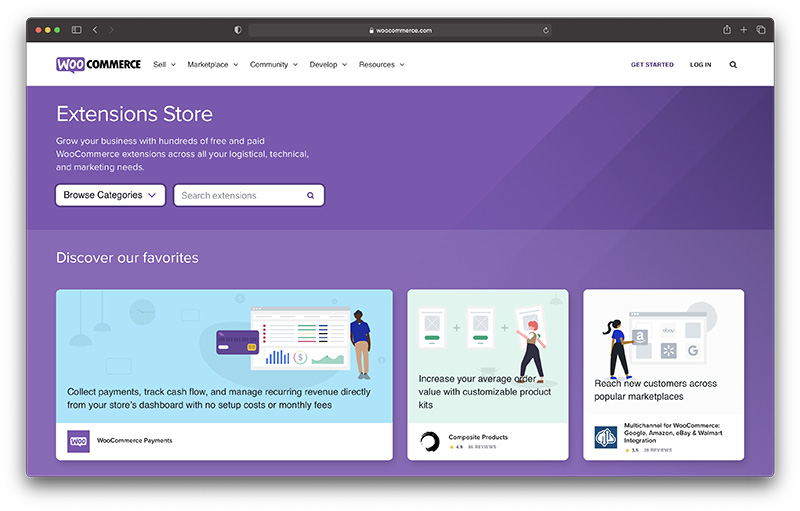
Some WordPress plugins are designed for WooCommerce, but the vast majority of them are simply for making your overall website better. No need to worry, since all of the WordPress plugins interact nicely with the WooCommerce plugin.
So, if you'd like to add a contact form you can go with Contact Form 7. There are also plenty of anti-spam, social media, email, marketing, accounting, and SEO plugins. It only takes a quick search to find what you're looking for, so the plugins and extensions are pivotal when building the perfect online store.
Marketing and SEO
WooCommerce is relatively good at helping you to grow your features in a few ways.
You can reward customers for shopping with you with coupons, loyalty schemes and points. Or WooCommerce also supports free gifting to encourage sales too.
For social proof, you can ask your customers to leave reviews or star ratings, which improves the credibility of your store.
For content marketing, WooCommerce expects you to take advantage of the blog on your WordPress site. There are no actual blogging features here, beyond the ones that you get from WordPress. It’s the same as SEO, you’re expected to use what’s already available.
In terms of search engine optimization, WooCommerce is supported by the basic search engine tools in WordPress. That means it automatically creates titles and metadata for your search engine results. WooCommerce doesn't have any SEO features itself, but you can add plugins like Yoast to improve the way you target keywords.
WooCommerce doesn't have many built-in marketing features. Automated emails are sent out when someone makes a purchase, so you can absolutely use those for branding and letting people know about other products.
Your best bet is to consider an email marketing service like Mailchimp, then integrating an email optin form. Social media tools and landing pages are also available through different themes and plugins.
To improve sales in your WooCommerce store, however, you can add new offers, up sells, and cross-sells as your customers are going through the checkout. There’s also the option for a related products section on your product pages to encourage customers to buy more.
Compatibility with various plugins ensures that you have various opportunities to improve your conversion rate through email marketing too.
You can connect your ecommerce site to an email plugin to recover abandoned carts and build automated email marketing strategies. The options for your ecommerce solution range all the way from Campaign Monitor to Mail Chimp.
WooCommerce also helps you to reach your customers where they are for more potential credit card conversions. This includes offering access to Facebook Ads, Amazon, eBay and Google Ads too.
Payment Processing
Stripe and PayPal are the most popular payment processors on WooCommerce. The plugin offers instant configuration tools for both of those.
WooCommerce also supports over 100 other payment gateways, so you can choose from the gigantic list and figure out which one works best in your region or for your budget.
This is important since you might end up paying more in transaction fees for one payment gateway over another. However, WooCommerce doesn't take any extra transaction fees, so that's certainly a plus.
One of the reasons I like these sort of many payment gateways is because it opens up online commerce for all types of businesses. Some gateways don't allow businesses in high-risk countries.
And sometimes you'll find a gateway with cheaper rates for specific industries or non-profits. With over 100 gateways you're bound to find something for your business.
WooCommerce is all about using the payment solutions that work best for you.
Since there are so many different payment providers, it’s pretty likely that you’re going to find something that works for your needs.
There’s even a payment processing solution designed exclusively for WooCommerce called WooCommerce Payments.
WooCommerce Payments allows you to view and manage transactions from your WordPress dashboard. You can securely accept all kinds of payments, set up strategies for recurring revenue, and access WooCommerce Subscriptions too.
WooCommerce Security
The WooCommerce platform is regularly audited by Sucuri, so you constantly have a well-known security brand checking in on the overall ecosystem of your plugin.
In addition, the WooCommerce code is secure, but you also have to find a good web host who's not going to open up your files to hackers.
All of the online payments are safe and secure, but it also depends on your payment gateway. I haven't reviewed every single gateway that WooCommerce supports, but I would like to think that the company has done a check on all of them.
You should be able to rest easy knowing that your site is safe and your customer information is encrypted.
The only thing to remember is that you have to get your own SSL certificate. A shared SSL can be obtained through the Let's Encrypt site. Or you have the option to buy a private one.
If you’re building an e-Commerce site with WooCommerce, you are expected to do some of the security work on your own. While security measures are delivered in WordPress automatically, you also need to handle your side of the bargain.
WooCommerce recommends starting with a reputable and reliable host that offers things like:
- Attack prevention and monitoring
- Proactive reviews and security threat patching
- Up-to-date server software
- The ability to isolate spreading infections
Speak to your host about the kind of security they offer before you start building with WooCommerce.
Beyond choosing the right host, you should also:
- use high-quality plugins,
- implement strong passwords,
- look for opportunities to prevent brute force attacks
If you’re using various plugins with WordPress and WooCommerce – keep them up to date! Outdated plugins are a nightmare for security.
Remember, you should also be looking into things like user access levels, SSL certificates, backups, site monitoring, firewalls, and secure authentication for your online store.
Customer Service
Customer service is a mixed bag with WooCommerce. In this WooCommerce review, you've probably noticed that there's a large community of people who make WooCommerce products and talk about WooCommerce every day.
Since WooCommerce gives its product away for free, it doesn't provide direct support. However, that doesn't mean you can't resolve problems with a little research. For instance, WooCommerce offers a wonderful documentation page, and you are allowed to send in emails if you have something specific.
Another piece of good news is that although WooCommerce doesn’t offer the same kind of support you’d expect from other store builders, it will help with issues.
The company will automatically fix any defects in the product as soon as they notice them. They can also provide a via the Helpdesk for smaller problems to help you get past any issues before a scheduled update.
The support service offered by WooCommerce doesn’t cover any help for products supplied by third parties who aren’t specific resellers of WooCommerce technology. The company may require companies to disable third-party products installed alongside the WooCommerce solution before they can help.
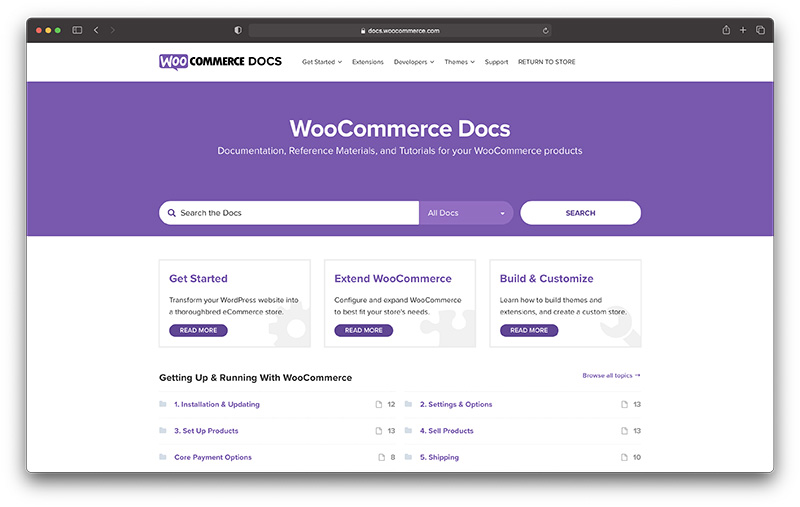
Many blogs and forums are also dedicated to the WooCommerce plugin, so most of the time you only have to complete a quick Google search to find what you're looking for.
WordPress is the same way. Most of the time you have to work out the kinks yourself and ask questions on forums. I usually start on Google, then go to some of my favorite blogs to make sure I can resolve a problem.
Hosting Your eCommerce Store
If you do decide to create a store with WooCommerce, then you’ll have to consider a few different things. For instance, you might need to figure out how you’re going to update your WooCommerce functionality with CSS code, or CSV files, or whether you want a plugin that allows you to collect customer reviews for your eCommerce website.
Best WooCommerce Hosting Providers
You’ll definitely need a hosting provider. There are plenty of options out there to choose from, but we’ve picked some of our favorites here.
1. SiteGround
Easily one of the most appealing hosting solutions for WooCommerce, SiteGround is ideal for retailers and business owners alike. The SiteGround WooCommerce plans share the same features as the basic shared hosting package, which includes a WooCommerce set-up experience out of the box, an SSL certificate (let’s encrypt) for extra protection, and an integrated CDN.
Siteground promises excellent loading times, and PCI compliant servers for small business owners taking payment details. SiteGround earns fantastic WooCommerce product reviews for it’s free shopping cart installation option, and easy-to-use environment.
While SiteGround won’t be the perfect solution for every business leader, it’s a great option or most, and prices start at as little as $6.99 for the simplest package.
2. DreamHost
Another great hosting provider, the DreamHost company offers specialist WooCommerce hosting for dedicated WordPress users. You’ll be able to access WooCommerce and the storefront pre-installed into your site for optimal performance. You can use WooCommerce with support to reduce spikes in traffic, slow site speeds, and protect against hacking. There’s also VaultPress backups for protecting your store data.
You get the JetPack Professional plugin included with this hosting provider for free, which helps to fight back against negative reviews by giving you a way to monitor downtime, as well as, shipping rate calculations, and a range of other benefits. All that, and you can enjoy a free SSL certificate too. DreamHost is easy to use, but it can be a little more expensive than some of the other WooCommerce hosting options on the market. Prices start at $16.95 per month for up to 100 visitors.
3. WP Engine
Our final recommendation for WooCommerce hosting is WP Engine. This fantastic WordPress solution is great for WooCommerce and WordPress. WP Engine’s infrastructure can handle various large stores, making it a great option for WooCommerce, and it comes with an integrated CDN and SSL certificate. You also get a built-in staging environment for testing changes to your store, and automatic backups.
WP Engine comes with a custom hosting dashboard that’s great for professionals but isn’t quite as easy to use as some of the other options on the market. Fortunately, the company does go above and beyond to help you make the most of your store, with tools like the eCommerce Toolkit. Pricing starts at around $25 per month, making this option neither the least expensive WooCommerce product, nor the most costly.
👉 For more WooCommerce hosting providers please check out this article.
Who Should Consider WooCommerce as Their Ecommerce Platform?
If you have no interest in paying a monthly fee for a platform like Shopify or BigCommerce, WooCommerce might be for you. I recommend WooCommerce for ecommerce business owners who don't want any limitations with their online stores. It allows you to scale up and customize whatever you want, and the learning curve isn't that bad.
WooCommerce gives you plenty of ways to deliver amazing experiences for your customers, while facilitating bank transfers for your company. You can enhance the service with review plugins and extra features designed to work with WordPress.
There are even SEO tools that work with WooCommerce and WordPress to get you into the rich snippets and improve your Google Analytics. However, it does take a little time to get used to the tech.
If you're a complete beginner to website design in general, some of the easier platforms like Wix and Shopify might work better.




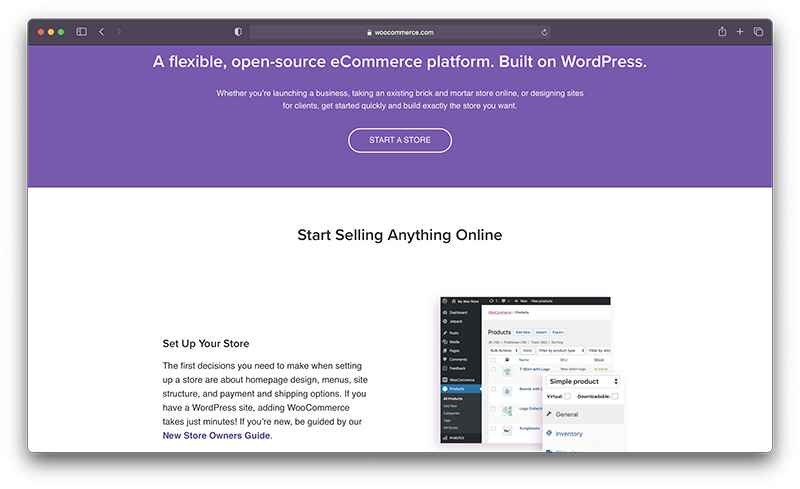

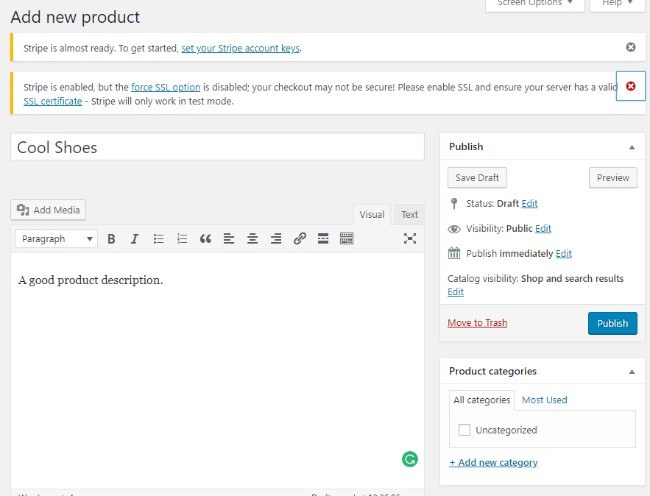
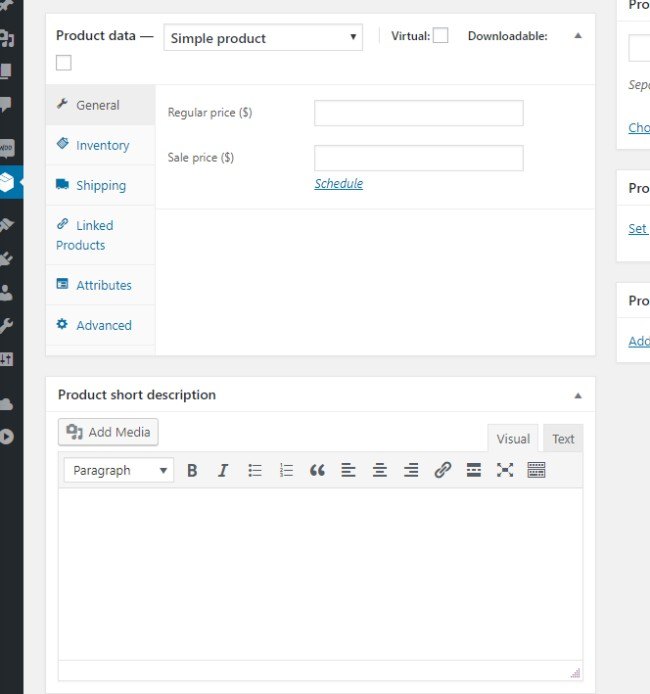





Nice content!
About payment gateways, I was about to download and warned me about “one year of updates free”
I got confused and didn’t make the download. I don’t find any info about what hapen after a year. Do I have to pay for this plugin?
Thanks in advance.
Hey Rubens,
When purchasing a WooCommerce.com product, you are purchasing a subscription to receive updates and support. Subscriptions are billed annually, but since this extension is free, in the second year you’ll get billet $0 and get another 1-year of support, and so on… I hope this helps.
Great Review, exactly what I was looking for.
You have answered all of my questions in one short article.
Thank you.
Ariel
Happy to hear that Ariel!